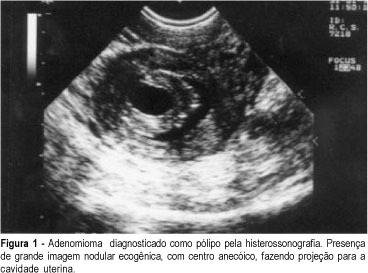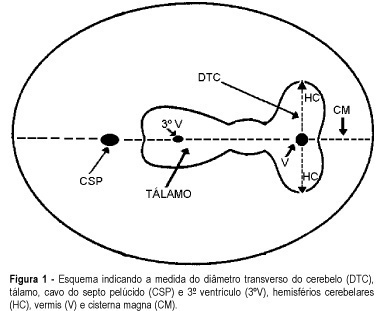Summary
Revista Brasileira de Ginecologia e Obstetrícia. 2000;22(5):301-305
DOI 10.1590/S0100-72032000000500008
Purpose: to analyze the surgical results after slings with vaginal wall, performed by the Urogynecology and Vaginal Surgery Sector of UNIFESP/EPM, for the treatment of incontinent women with hypermobility of the bladder neck, who show great risk of surgery failure with other techniques or in those with intrinsic sphincteric deficiency (ISD) and, also, surgery recurrence. Methods: we studied 21 patients submitted to surgery in order to correct urinary incontinence by the vaginal wall sling technique, in the period from December 1997 to February 1999, with postoperative follow-up which varied between 1 and 14 months (average 8.2). The mean age of patients was 56 years (39 to 77 years), 15 (71.4%) were in menopause and 6 (28.6%) in menacme. All patients were evaluated before the surgery through medical interview, physical examination, ultrasound and urodynamic study, the grade of urinary loss being high in 66.7% and moderate in 33.3% of the patients. All patients showed hypermobility of the bladder neck (more than 10 mm) and 12 patients had previous surgery to correct the urinary incontinence. Regarding the urodinamic study, the patients manifested urinary loss with maximum pressure of urethral closure (MPUC) varying from 20 to 124 cmH2O (average 55.2) and Valsalva leak point pressure (VLPP) varying from 18 to 128 cmH2O (average 60.3). The indications of surgery were: ISD (11 patients -- 52.4%), obesity (5 patients -- 23.8%), ISD and obesity (2 patients -- 9.5%), surgery recurrence (2 patients -- 9.5) and ISD and first grade womb prolapse (1 patient -- 4.8%). Results: as complications, 6 patients (28.6%) showed temporary urinary retention after surgery, 1 patient (4.8%) infection in the urinary tract, 1 patient (4.8%) presence of polypropylene suture in the vagina, 1 patient (4.8%) infection of the surgery wound, 4 patients (19%) developed urgency/incontinence, 1 (4.8%) urgency and 1 (4.8%) difficulty in urinating (high postvoiding residue). The grade of the patients' satisfaction was satisfactory, with 15 patients (71.4%) referring cure, 3 patients (14.3%) improvement, in 2 patients (9.5%) the urinary loss remained unchanged and in 1 patient (4.8%) the urinary loss got worse. Conclusions: the vaginal wall sling surgery is efficient for the treatment of specific cases of stress urinary incontinence, emphasizing intrinsic urethral sphincteric incompetence, surgery recurrence and predisposing factors to failure of other techniques.
Summary
Revista Brasileira de Ginecologia e Obstetrícia. 2000;22(5):293-299
DOI 10.1590/S0100-72032000000500007
Purpose: to determine the role of sonohysterography in the evaluation of abnormalities in the uterine cavity in patients presenting abnormal uterine bleeding, who had previously been selected by transvaginal ultrasonography. Methods: forty-eight patients presenting abnormal uterine bleeding and changes in the uterine cavity seen by transvaginal ultrasonography were selected, and they were in the menacme or postmenopause period. All patients underwent a sonohysterography, and later a hysteroscopy and/or a hysterectomy. The sonohysterographies were evaluated by two different physicians, and the diagnoses were compared. Results: the sonohysterography method showed high sensitivity and specificity for the diagnosis of benign pathologies in the uterine cavity. First, in the presence of polyps the sensitivity and specificity rates were 100 and 97%, respectively, second, in the presence of submucous myoma, they were 83 and 100%, and finally, concerning endometrial hyperplasia and normal endometrium, they were 100%. We diagnosed thirty-three cases of polyps, thirteen cases of submucous myoma, four cases of endometrial hyperplasia and three normal cases. The correlation between the diagnoses provided by the two physicians was high. Conclusions: sonohysterography is a safe and fast method which is very well tolerated by the patient, and has low levels of complications. Its high sensitivity and specificity allow this method to be used for routine diagnosis concerning benign pathologies in the uterine cavity of patients presenting abnormal uterine bleeding.

Summary
Revista Brasileira de Ginecologia e Obstetrícia. 2000;22(5):287-292
DOI 10.1590/S0100-72032000000500006
Purpose: to evaluate the effects of hormone replacement therapy (HRT) on the systolic and diastolic blood pressure of postmenopausal women. Methods: a total of 166 users and 136 non-users of hormone replacement were evaluated retrospectively during a period of three years. All women were assisted at the Menopause Outpatient Clinic of CAISM -- Unicamp, where the variations of these parameters were evaluated at the end of each year in relation to the initial parameters. The data analysis was performed through Student's t test, Mann-Whitney test, and the Wilcoxon nonparametric test. Results: we observed that the systolic blood pressure of HRT users was statistically lower at the end of the third year of use, compared to the initial values (p = 0.01). There was no significant difference in the diastolic blood pressure between users and non-users. Conclusion: hormone replacement therapy did not produce changes in the parameters studied in women properly assisted during the use of HRT.
Summary
Revista Brasileira de Ginecologia e Obstetrícia. 2000;22(5):281-286
DOI 10.1590/S0100-72032000000500005
Purpose: to evaluate the effectiveness of the transverse cerebellar diameter (TCD), by ultrasonography, in the evolution of the fetal growth, and to relate it to gestational age, biparietal diameter (BPD), head circumference (HC), abdominal circumference (AC) and femur length (FL). Method: a prospective and longitudinal study was performed on 254 pregnant women considered of low risk, with a gestational age from 20 to 40 weeks. Only 55 pregnant women were included in the study, according to inclusion and exclusion criteria. All the examinations, 217 ultrasonographic evaluations, were done by the author (LN), at least three and at most six examinations for each pregnant woman being accomplished at an interval of one to five weeks. Normality patterns were established between the 10 and 90 percentiles for each gestational age and confirmed postnatally. Results: the transverse cerebellar diameter presented a good correlation with the gestational age either as a dependent variable (R² = 0.90) or as an independent variable (R² = 0.92). A significant relationship was found in the evaluation of the fetal growth between the TCD and the several fetal parameters: BPD and HC (R² = 0.92), FL (R² = 0.90) and AC (R² = 0.89). Conclusions: the transverse cerebellar diameter is a parameter that should be used in the follow-up of development and of fetal growth because of the ascending pattern of its growth curve. Any up- or downward alteration in the growth curve can be useful for the detection of deviations of fetal growth.

Summary
Revista Brasileira de Ginecologia e Obstetrícia. 2000;22(5):275-279
DOI 10.1590/S0100-72032000000500004
Objective: to evaluate ultrasound findings in pregnant women with threatened abortion in the first trimester of pregnancy. Methods: transabdominal and transvaginal ultrasound scans were performed in patients with vaginal bleeding with previous positive pregnancy test. Patients with 6-14-week gestation (by the last menstrual period or ultrasound scan), with closed cervix on clinical evaluation were included. Multiple pregnancies and those patients who have tried abortion by using abortive drugs or manipulation were excluded. Results: in 132 of 247 (53.4%) the pregnancy was viable and in 46.6% (115/247) the pregnancy was nonviable. Incomplete miscarriage was found in 19% (47/247), complete miscarriage in 8.5% (21/247), missed abortion in 7.7% (19/247), anembryonic pregnancy in 6.1% (15/247), ectopic pregnancy in 4.5% (11/247) and hydatidiform mole in 0.8% (2/247). Conclusion: almost half (46.6%) of the pregnancies with threatened abortion in the first trimester were diagnosed as a nonviable pregnancy. The ultrasound scan can help to define this condition and the management of the pregnancy.
Summary
Revista Brasileira de Ginecologia e Obstetrícia. 2000;22(5):265-274
DOI 10.1590/S0100-72032000000500003
Purpose: this study, using verapamil, a slow calcium channel blocker, was a randomized, clinical, double blind and placebo controlled trial, whose objective was to observe if there was a uteroplacental and fetoplacental flow variation during its chronic oral use. Methods: 123 patients were accompanied: study group (n = 61), submitted to verapamil 240 mg/day and control group (n = 62), submitted to placebo. These patients were randomized into groups of four women and treatment or placebo was given for thirty days. A flow examination of the uterine arteries and umbilical artery through doppler-velocimetry was recorded. The values of resistance (RI) and pulsatility index (PI) and of the systole/diastole ratio (S/D) of the arteries were compared after the drug administration calculating means and standard deviations. Results: the verapamil group showed RI = 0.82 (0.28), PI = 1.06 (0.12) and S/D = 2.42 (0.51) in the uterine arteries. The placebo group showed RI = 0.75 (0.35), PI = 1.00 (0.18) and S/D = 2.30 (0.38). When we analyzed the umbilical artery, the verapamil group showed RI = 0.73 (0.12), PI = 1.04 (0.13) and S/D = 2.94 (0.32). The placebo group showed RI = 0.70 (0.14), PI = 1.03 (0.07) and S/D = 3.02 (0.78). The statistical analysis of the differences of the means by the F ratio showed that there was no difference between these two groups. Conclusion: this study indicates the use of verapamil for chronic hypertensive pregnants since it does not provoke damage to the uterine and fetal blood flow.
Summary
Revista Brasileira de Ginecologia e Obstetrícia. 2000;22(5):257-263
DOI 10.1590/S0100-72032000000500002
Purpose: to evaluate the evolution of gestation, metabolic control and perinatal outcome of pregestational diabetic patients and to perform a comparative study of the results of patients with insulin-dependent diabetes (type I) and non-insulin-dependent diabetes (type II). Methods: retrospective analysis of 57 pregestational diabetic woman charts who began a prenatal follow-up in the Service of Maternofetal Medicine of the Maternidade-Escola Assis Chateaubriand of the Universidade Federal do Ceará, in the period from January 1995 to December 1998. The 57 pregnant women included in the study were divided into groups: the first, composed of 28 patients with insulin-dependent diabetes (type I), and the second with 29 pregnant women with non-insulin-dependent diabetes (type II), controlled with diet or with oral hypoglycemics before pregnancy. Results: there was no statistically significant difference between the two groups in relation to the need of hospitalization for glycemia control (39.2% x 27.5%) and maternal complications, such as: chronic arterial hypertension (14.2% x 27.5%), pregnancy-induced hypertension (14.2% x 17.2%), premature rupture of membranes (3.5% x 10.3%), urinary tract infection (10.7% x 6.8%), and preterm labor (3.5% x 6.8%). However, episodes of maternal hypoglycemia were more frequent among insulin-dependent patients (35.7% x 3.4%). The perinatal results were similar. We observed a great number of congenital anomalies and increased perinatal morbidity and mortality. Conclusion: there was no difference in the incidence of obstetric and clinical complications between insulin-dependent and non-insulin-dependent patients, except for maternal hypoglycemia.
Summary
Revista Brasileira de Ginecologia e Obstetrícia. 2004;26(8):605-610
DOI 10.1590/S0100-72032004000800003
OBJECTIVE: to evaluate staging, surgical procedures and outcome of ovarian granulosa cell tumors (GCT), with emphasis in the possibility of conservative surgery (unilateral ooforectomy). METHODS: this is a retrospective cohort study in which 24 patients treated with GCT during the period of January 1994 to January 2004 were included. Variables of interest such as patient's age, symptoms, tumor size on physical examination, staging, treatment modalities (types of surgery and of adjuvant chemotherapy and/or radiotherapy) and prognosis have been analyzed. The chi-square test was used to check the association between variables, and the level of significance was set at p < 0.05, always describing the two-tailed Fisher exact test. RESULTS: the patients' age varied from 30 to 82 (mean 51.7) years old. The most frequently referred symptom was pelvic pain (n = 10; 41.7%). Fourteen patients (58.3%) presented clinical stage (CS) Ic, 5 (20.8%) CS IIIc and 5 (20.8%) CS Ia. More advanced clinical stages were significantly associated with palpable pelvic masses (p < 0.04). Endometrial hyperplasias were found in 3 (25%) of the 12 hysterectomy specimens. The follow-up period varied from 2 to 114 (mean 42.5) months. Among the 16 (66.7%) surviving and disease-free patients, 4 had CS Ia (25%), 11 CS Ib (68.8%) and 1 CS Ic (6.3%), whereas all patients who died had CS IIIc (p = 0.0008). All 6 patients (25%) that underwent conservative surgery were alive and without recurrence. CONCLUSION: although GCT usually present low aggressiveness, the clinical staging continues to be the main prognostic factor and hence it determines the option for conservative surgery and the use of adjuvant therapy.